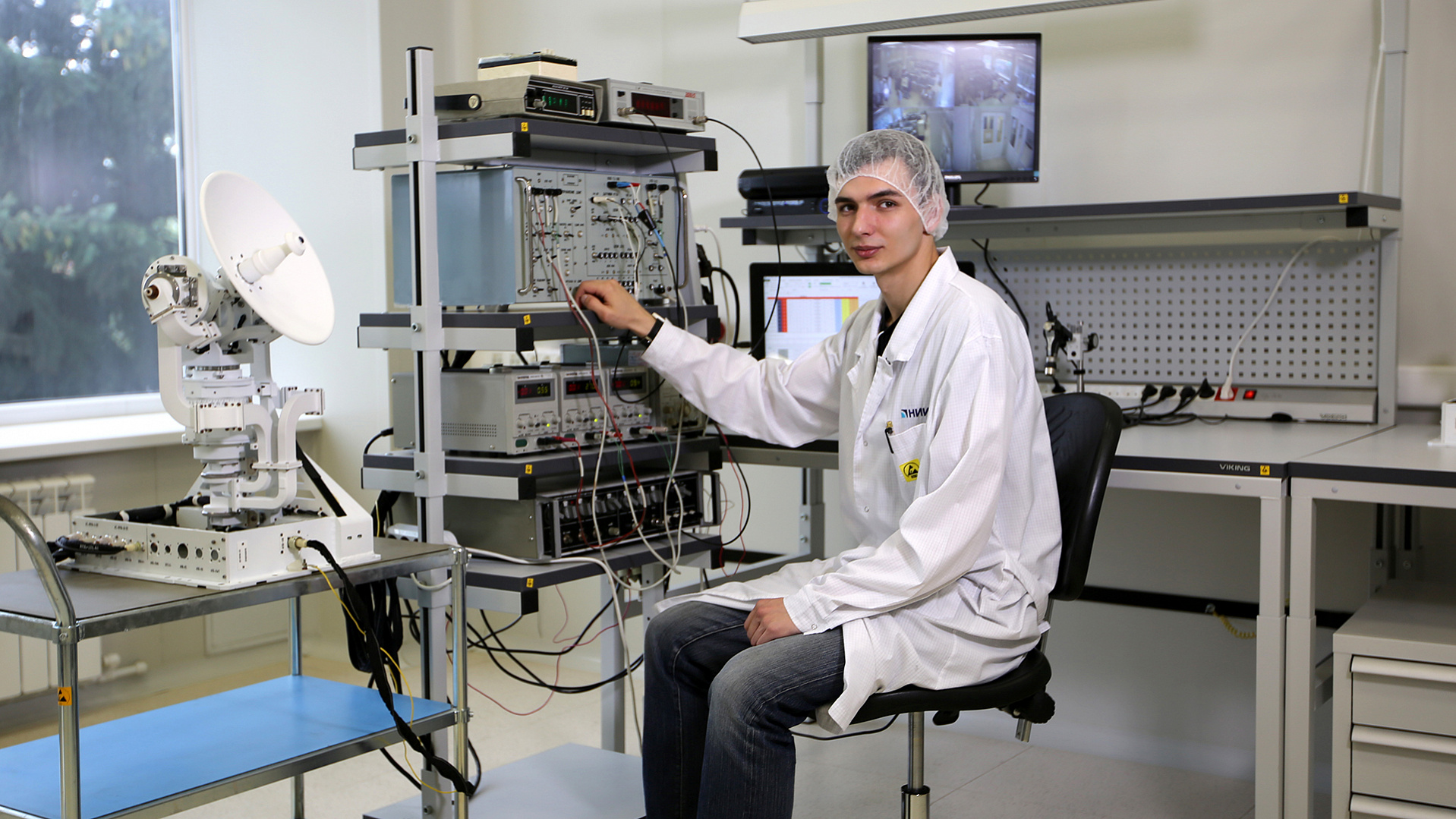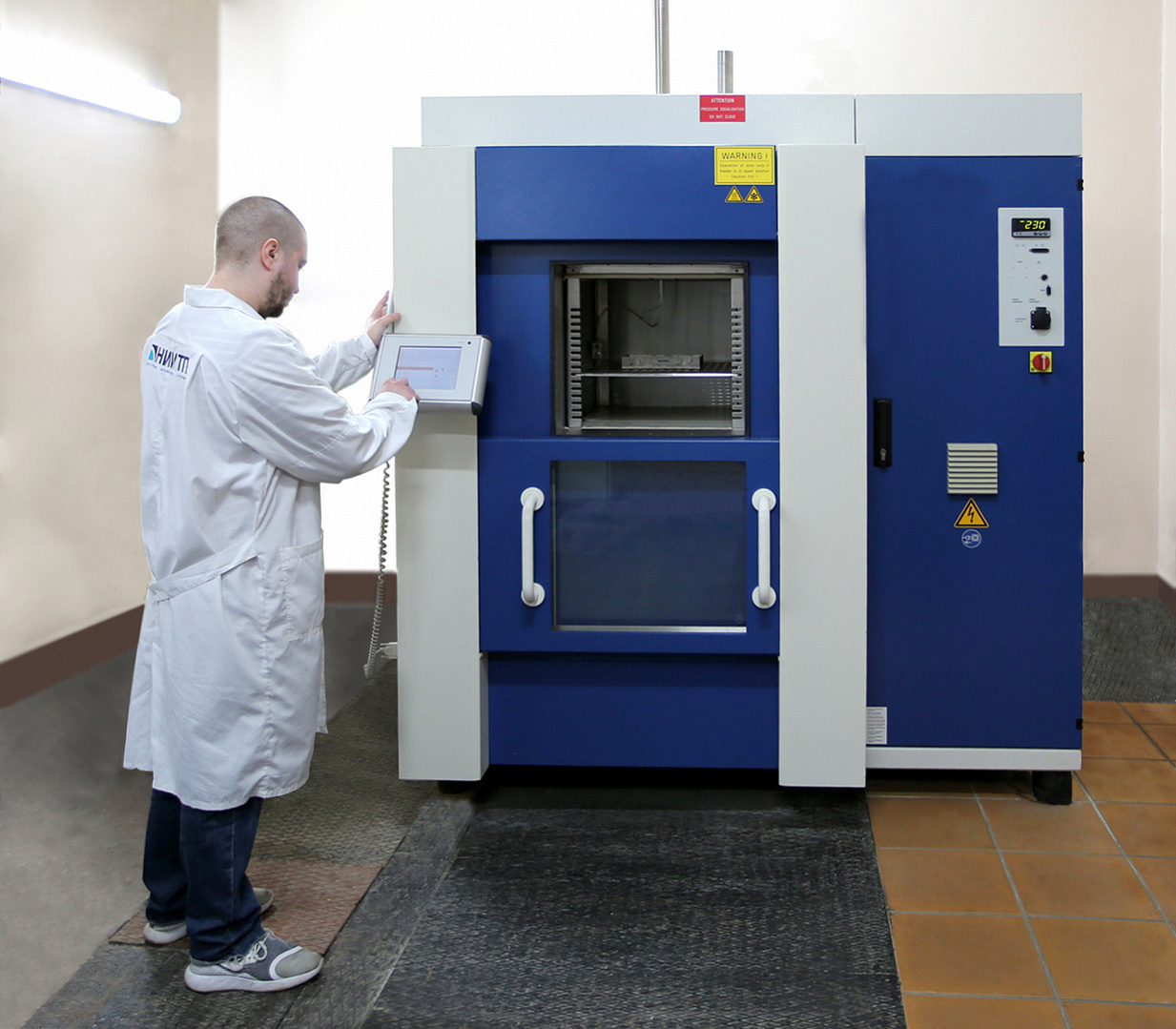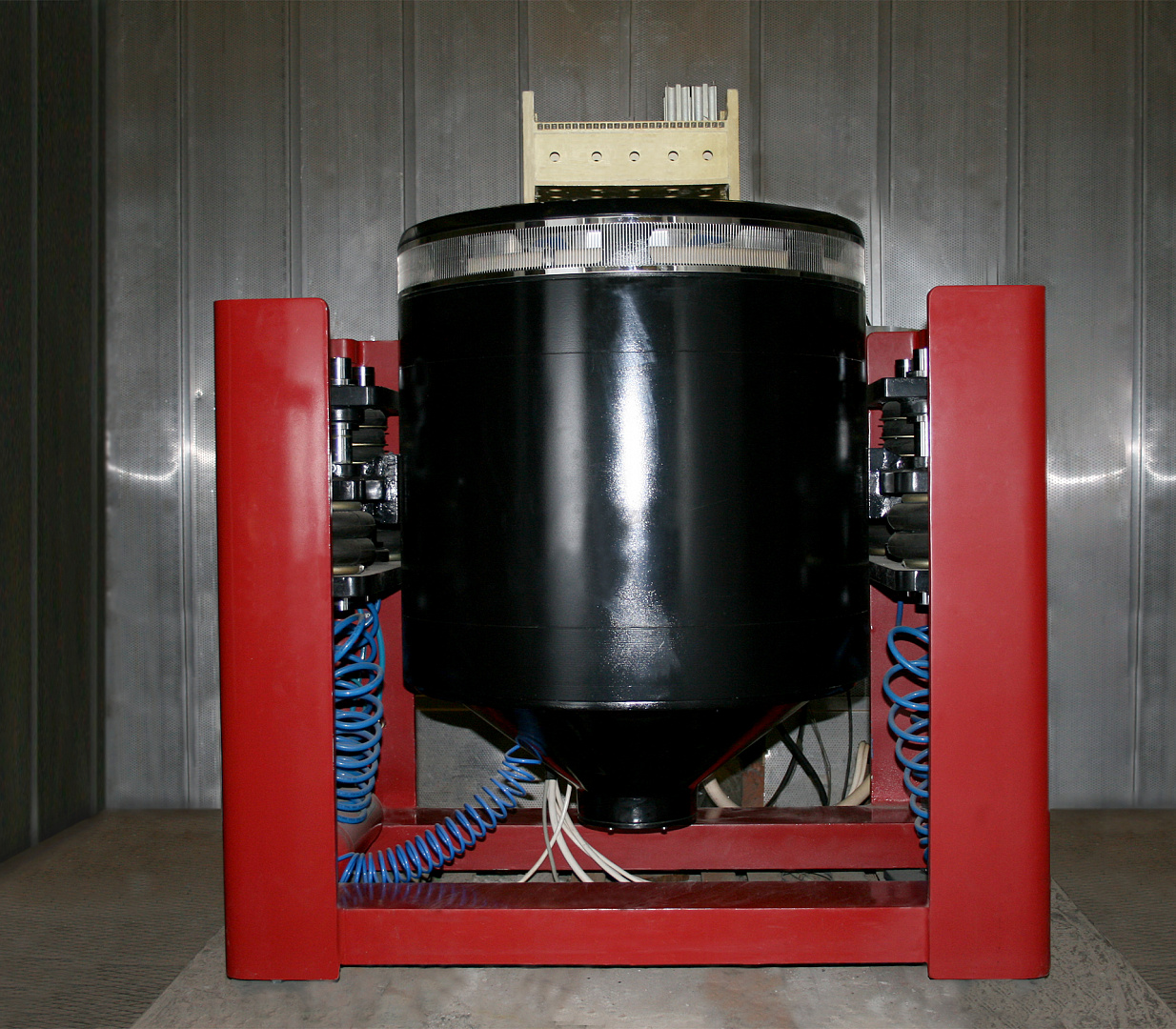Metrology and engineering support for on-site final testing/adjustment procedures
The RIPI’s Metrology Service is equipped with state-of-the-art measuring stock, ensuring radio-engineering, electrotechnical, linear, angular, temperature measurements, etc.
High qualification of our experienced metrology staff, availability of standards, nomenclature and the required number of measuring instruments allow conducting the following types of work in accordance with the accreditation scope:
- metrological evaluation of technical documentation in accordance with GOST RV 8.573-2000 GSI
- matching and measurement procedure (methods) certification under the terms of GOST R 8.563-2009 GSI
- verification of measuring instruments
- calibration of measuring instruments
Products for space applications are exposed to complex interaction of various external factors when in operation in space, so their performance capability and long service life directly depends on their ability to withstand extreme environment. Confirmation that the tactical/technical characteristics correspond to the data specified for this product being under the influence of external factors is carried out at the stages of manufacturing and performing on-site final testing/adjustment procedures (OTAP). The test laboratory possesses a fleet of special testing equipment and measuring instruments needed for the tasks to be undertaken.
OTAP – is one of the main ways for qualitatively and quantitatively assessing the equipment for compliance with the requirements specified in a technical project.
Within the framework of the OTAP, experiments and investigations, monitoring of equipment parameters and their comparison with the nominal values, diagnostics and identification of reasons of deviation (if any); elimination of causes and debugging are carried out.
Besides that, the test laboratory shall provide the equipment designers with the test equipment certified according to GOST R 8.568-2017:
- climatic chambers
- vibration test bench
- shock tester
- leak detector
- electrostatic discharge generator (made by Tomsk Institute of Non-Destructive Testing)
- centrifuge
- thermal vacuum chamber
- self-designed overpressure chamber
The experienced laboratory specialists ensure that the necessary modes for external influencing factors are set and monitored during tests; as well as conduct measurements; participate in the development of testing programs and methods.
Within the laboratory, it is possible to carry out a wide range of tests, such as boundary, endurance, testing for transportation, the effects of frost, dew, resistance, insulation breakdown and electrostatic discharges and so on.
The test laboratory allows conducting the following types of tests:
Mechanical tests
for exposure to:
- sinusoidal and broadband random vibration in the operating frequency range from 5 to 3000 Hz, for products weighing up to 100 kg (in the range from 5 to 5000 Hz weighing up to 10 kg). The maximum vector push-off force of the vibration stands is 27.0 and 2.35 kN, respectively
- shock accelerations of up to 1000 g, with a shock pulse duration from 0.3 to 20.0 ms, for products weighing up to 500 kg
- linear accelerations from 1 to 50 g for products weighing up to 300 kg (provided safe fastening is possible)
Climatic tests
for exposure to:
- higher and lower temperatures from minus 70 ̊С to plus 120 ̊С
- effects of temperature shock (transition temperature from minimum to maximum is no more than 5 s)
- higher and lower levels of relative humidity varying between 10 – 98 %
- combined climatic (temperature, humidity) and mechanical (sinusoidal vibration, broadband random vibration) factors for testing products weighing no more than 10 kg inside a chamber with a working volume of 1.2 m3
- gaseous environment of non-aggressive and inert gases (pure nitrogen, helium, etc.)
- high and low atmospheric pressure varying between 1and 2300 mm Hg
Thermal vacuum tests
for exposure under vacuum conditions no worse than 1.33 x 10-6 mm Hg to:
- temperatures of a cryoscreen from minus 90 ̊С to plus 120 ̊С
- temperatures of seats (fasteners) from minus 20 ̊С to plus 50 ̊С
- working volume of chambers of 0.6 m3 and 0.2 m3
Leakage detection tests and measuring the flow of helium leaking by:
- mass spectrometric method
- hyperbaric aquarium testing method
- hydrostatic pressure testing method
Tests for resistance to electrostatic discharge with a pulse repetition interval from 10 to 50 Hz. When electrostatic discharges are introduced with:
- a capacitive tip
- a spark gap with an inductor
- a discharge tip (direct contact to the product)


